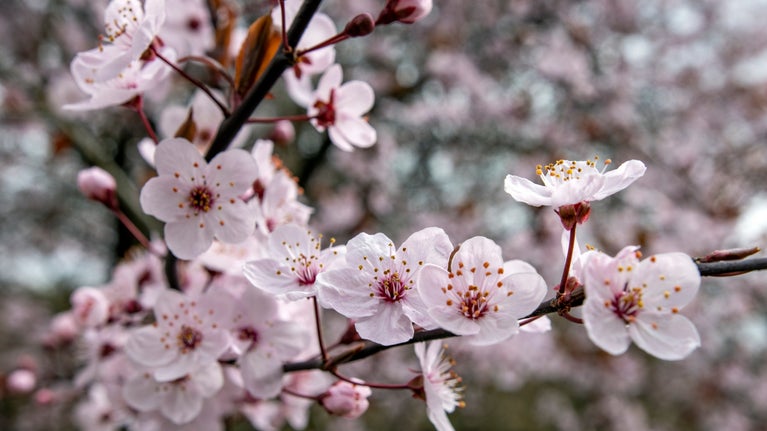
Explore blossom of the past and present
Discover more about how blossom-inspired street names have changed in your area.

New research has found that despite blossom declining in our landscapes since 1900, the number of place names linked with blossom has doubled. Blossom-related place names are also becoming increasingly generic – indicating a lost connection with individual tree species. Find out what this means for our blossom work across the UK.
As part of our 2024 celebration of blossom, we're sharing new research that's revealed the significance of historic blossom in influencing the street and place names that still exist today.
Although areas of traditional orchards have declined, place names associated with blossom have increased, showing its continued relevance to people across England and Wales. Detailed analysis found that the number of place names associated with blossom has doubled in the last century, going from 3 per cent (23,000 of the 700,000 place names examined in 1900) to 6 per cent (51,000 of the 912,000 place names examined) in 2023.
However, the research also found that that although blossom-related place names are increasing, they have become more generic and less regionally specific.
Place names can point to our values, beliefs and shared stories – they help us navigate cultural memory as much as they do the landscape itself.
Research was carried out by our own research team – led by our Head of Environmental Research, Professor Matthew Heard, and our Head of Historic Environment, Tom Dommett – and analysed modern and historic maps using artificial intelligence (AI). The results were then matched with the results of our orchards research from 2022 (which used AI to identify symbols relating to orchards on the same maps) and found a 50 per cent decline in orchards – and their blossoming trees – across England and Wales since 1900.

The lost blossom research has shown us that nature still plays a massive role in people's lives, and we want to make sure everyone can enjoy it, wherever they are.
Through our celebration of Blossom programme, which is supported by players of People’s Postcode Lottery, we're hoping to bring blossom back to as many cities and urban areas as possible through various projects, including the blossom gardens in London, Plymouth, Newcastle and Nottingham.
By 2030, we're aiming to incorporate four million blossoming trees into our ambitions to plant and establish 20 million trees across England, Wales and Northern Ireland by 2030.
Where we can, we want these plantings to reflect the cultural history of the area through the use of traditional varieties, helping the connection between people, blossom and place to endure, as well as benefiting nature.

Discover more about how blossom-inspired street names have changed in your area.
Hedgerows and orchards provide food for insects, homes for wildlife and a spectacle of spring blossom for humans. However, they are disappearing from UK landscapes. Find out more about what we're doing to bring blossoming trees and hedgerows back.

Learn how research helps us understand changes in the world around us, discover more about the places the Trust cares for and find practical solutions to conservation problems.